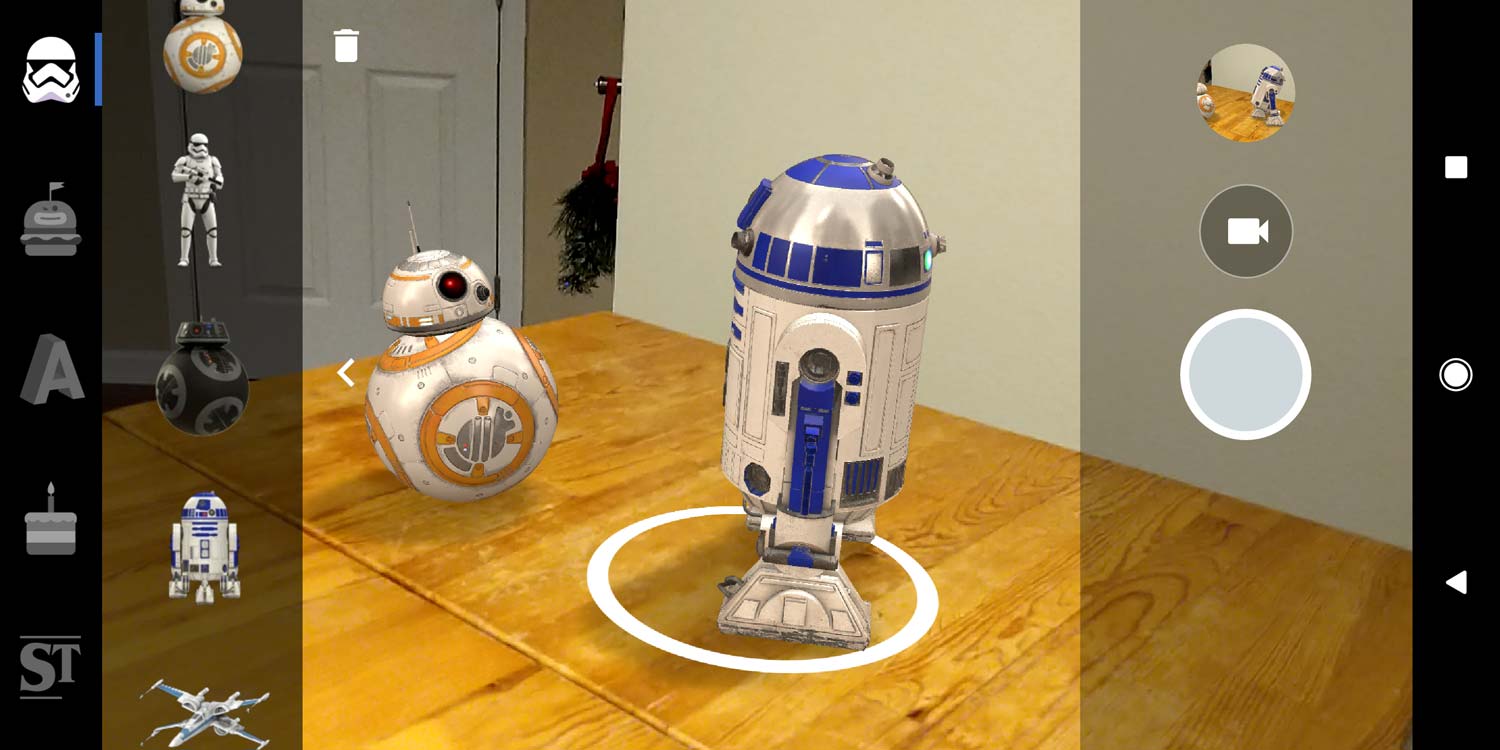Google’s Star Wars AR Stickers Are Here: How to Use Them
You'll need a Pixel or Pixel 2 running Android 8.1 to feel the force of Star Wars in augmented reality form.
The arrival of Android 8.1 Oreo brings an exciting new augmented reality feature Google calls AR Stickers — movable animated figures that you can place in photos and videos. Think of them like Snapchat filters, though they work within the stock camera app and can be freely positioned and resized as you see fit.
Google first demoed the feature when it showed off the Pixel 2 back in October. At the time, Google touted AR Stickers based on characters from the popular Netflix series, Stranger Things. But with the feature arriving at the same time as Star Wars: The Last Jedi, you’ll find a few augmented reality characters from a galaxy far, far away, too.
The only devices currently running Android 8.1 are Google’s Pixel and Pixel 2 phones, so you’ll need one of those to get in on the fun. And Android 8.1 just started rolling out to those phones, so not every device can access AR Stickers just yet.
Provided you have the necessary hardware, though, using AR Stickers is simple and easy. You will be limited to only a handful of packs in the app at the time of writing, which include the Star Wars and Stranger Things offerings.
Getting Started with AR Stickers

First things, first: you’ll need to download the latest updates for ARCore and AR Stickers in Google Play. I actually had a little trouble finding the ARCore app via search, so I followed this direct link to the app instead. Once you’ve updated both apps, you should find the AR Stickers option added to the menu in the Pixel’s Camera app.
MORE: Here's How Much the Pixel 2 Camera Improves with Android 8.1
Upon starting AR Stickers, you’ll be asked to move your phone around your surroundings, so the Pixel can get a good sense of the available space. Then, you’ll be able to start placing stickers in your surroundings, which is as simple as dragging and dropping them. They can be scaled smaller or larger with a two-finger pinch, and you can pivot your fingers to turn them around.
Get instant access to breaking news, the hottest reviews, great deals and helpful tips.
Each pack comes with an assortment of figures to choose from. With my anticipation for The Last Jedi running high, I immediately explored the Star Wars set, which was highlighted by R2-D2 and BB-8, as well as vehicles like AT-ATs, X-Wings, and Tie Fighters. The Stranger Things pack includes the kids from Hawkins Middle School, and even a mini Demogorgon. In addition to famous characters, there are also balloon letters, which you can use to write words and phrases.
Eventually, the stickers will interact with each other, and I was surprised to find that Google lets you place any combination of figures from different packs in the same scene –– meaning Eleven can eat her Eggos in the company of a Stormtrooper, if you allow it. There’s seemingly no limit to the number of stickers you can set down, but be warned: once you get to about 10, things can really slow down, and your phone is likely to get quite warm.
ARCore and AR Stickers fold Google’s earlier work on its Project Tango spatial awareness system into a software platform that can run on a variety of Android devices. It’s all designed to work without the sophisticated, specialized hardware Tango demanded, that was found in the Lenovo Phab 2 Pro and Asus ZenFone AR.
Indeed, during my time with AR Stickers on the Pixel 2 XL, the effect was smooth and convincing. Hopefully the feature will work just as well on less powerful hardware. Ironically, no Tango-enabled phones have received Android 8.1 yet –– let alone 8.0 Oreo –– meaning owners of those devices will need to wait before getting to play with AR Stickers, if they ever get the chance at all.
Adam Ismail is a staff writer at Jalopnik and previously worked on Tom's Guide covering smartphones, car tech and gaming. His love for all things mobile began with the original Motorola Droid; since then he’s owned a variety of Android and iOS-powered handsets, refusing to stay loyal to one platform. His work has also appeared on Digital Trends and GTPlanet. When he’s not fiddling with the latest devices, he’s at an indie pop show, recording a podcast or playing Sega Dreamcast.
